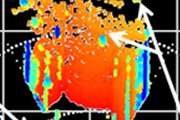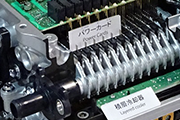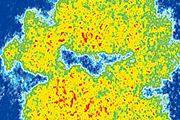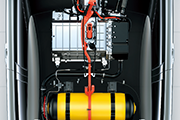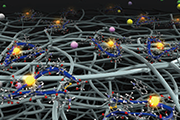A Novel Method for High-Frequency Battery Impedance Measurement
A study conducted by Keisuke Ishikawa et al. was published in the IEEE Transactions on Instrumentation and Measurement.
As electric vehicles and renewable energy become more widespread, the importance of reliable battery diagnostics is growing. In particular, for lithium-ion batteries, it is critical to detect the degradation mode known as “Li deposition,” which compromises safety. Our institute developed “MaMoRiS®,” a technique that detects Li deposition―a mechanical change―by monitoring MHz-band impedance variations [Click here for details]. Electrochemical impedance spectroscopy (EIS) is commonly used to assess battery degradation, and a VNA-based shunt-through method extends impedance measurements into the high‐frequency range (>100 kHz). Originally intended for small electronic components, this technique faces accuracy and precision issues when applied to batteries because of parasitic fixture impedances and variable contact resistance.
To address these challenges, we propose an Extended Shunt-Through Method that reduces contact and fixture effects while expanding the usable frequency range. This method features a four-port connection scheme, in which four independent links connect the VNA to the battery to perform mixed-mode measurements that isolate and subtract parasitic impedances. It also employs a novel algorithm that calculates the battery’s true impedance from the measured S-parameters, effectively removing any remaining contact and fixture errors. Simulation results showed real‐part accuracy within 10 % up to 327.5 MHz and imaginary‐part accuracy within 10 % up to 432.9 MHz. Tests on commercial cylindrical Li-ion batteries confirmed high precision, with coefficients of variation below 0.2 % for both real and imaginary impedance components between 0.32 and 120 MHz. By enabling accurate, high‐precision EIS measurements above 100 MHz, this method significantly improves conventional approaches. It enhances the MaMoRiS® technique for detecting Li-metal plating and paves the way for more reliable battery diagnostics and performance optimization—key steps toward safer electric vehicles and more robust renewable energy systems.
Title: Extended Shunt-through Method for High-frequency Battery Impedance Measurement
Authors: Ishikawa, K., Usuki, T., Komagata, S., Morimoto, R., Ishigaki, M.
Journal Name: IEEE Transactions on Instrumentation and Measurement
Published: April 9, 2025
https://doi.org/10.1109/TIM.2025.3558744























